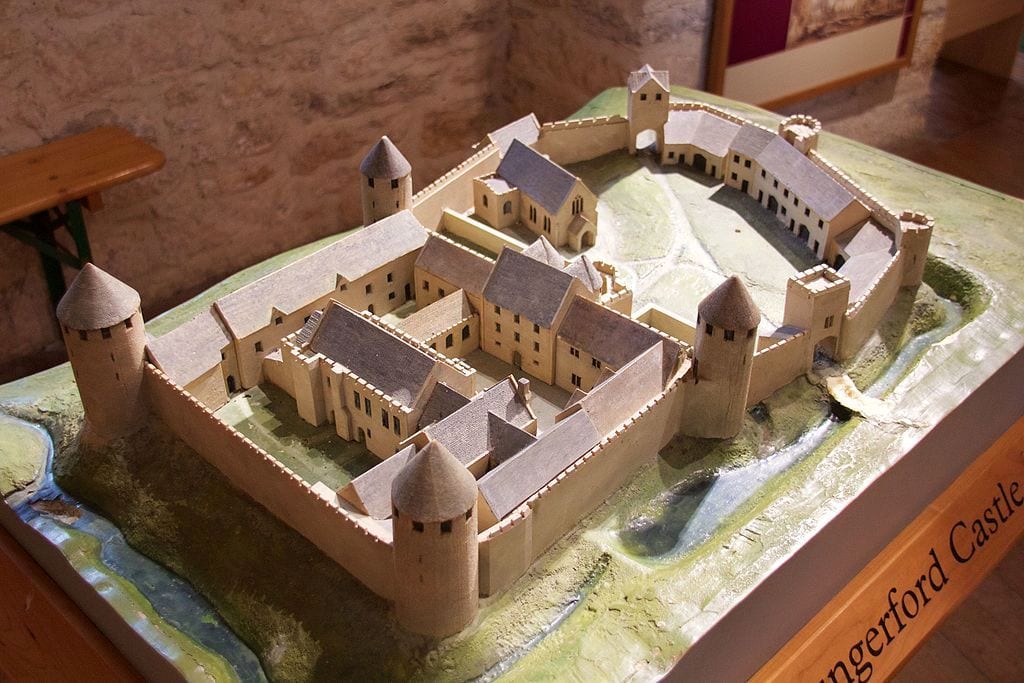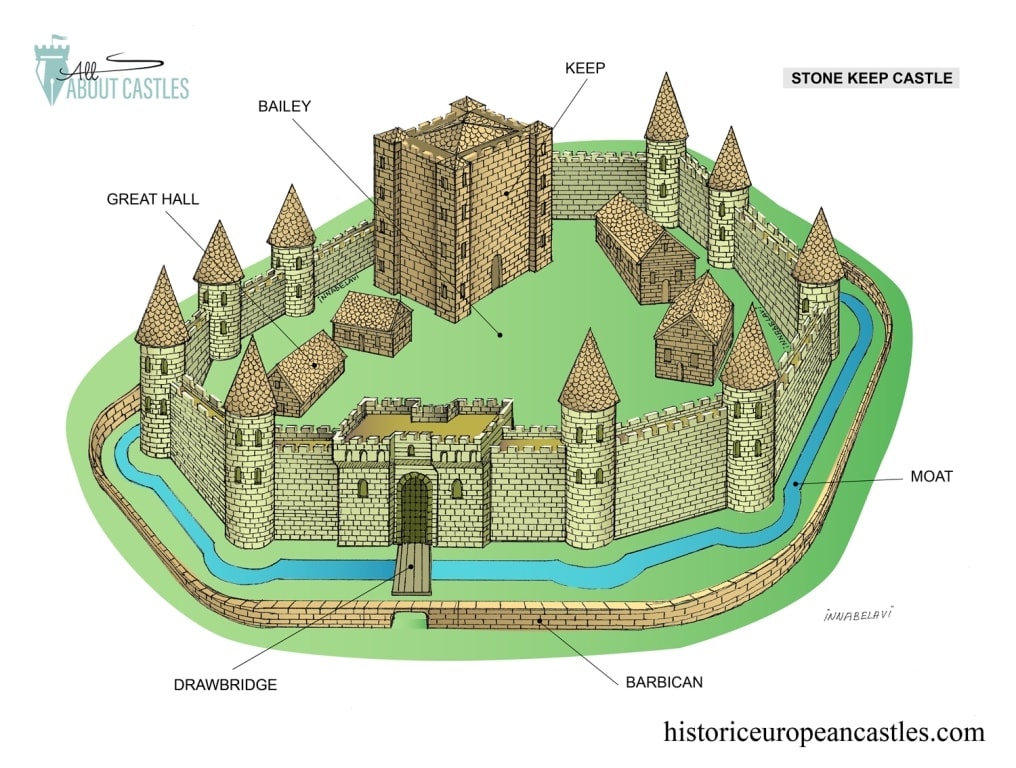Castle layouts Google Search World Building Pinterest Castles, Medieval and Medieval times

Conwy castle plan completed in 1287 Castle layout, Castle plans, Castle floor plan
Here is an example of the layout of a typical medieval castle showing the main components. Click the image to view a 3d version. Below is the plan of Goodrich Castle. The key parts of this castle are labelled and the purpose of these parts can be found below. Allure

Medieval Castle Layout Historic European Castles
The word castle is sometimes applied to prehistoric earthworks, such as Maiden Castle in England, and is also applied, in various linguistic forms (e.g., château, castello, and Burg ), to princely mansions or country seats. château of the dukes of Anjou Château of the dukes of Anjou, Saumur, France. History of Hohenschwangau Castle

Kid Friendly Graphic Design of a Medieval Castle Hotham Digons
Typically, a great hall would have a rectangular layout, with a floorplan between one and a half to three times longer than it was wide. The room would also have a high ceiling as well as a raised area or 'dais' at the high end of the hall, where the lord, his household, and his guests would dine, in clear view of the rest of the hall.

Medieval Castle Layout The Different Rooms and Areas of a Typical Castle Exploring Castles
A cutaway drawing of a drawbridge mechanism. A tower house castle with an extra tower added to create the L shape. Castle plan rendered in AutoCAD with colored lights added. A mansion type castle plan with large great room in the center. A full size castle tower that you can live or play in. $750k Two story castle hall. Castle hall with end tower.

9 Different Types of Castles Built Throughout History
Castle Design Through the Middle Ages. February 1, 2021. From their origins in the 9 th and 10 th centuries, castles grew to be a key feature of the landscape in medieval Europe. In this feudal society, based around land ownership and service, securing possession of territory was crucial to lords and nobles being able to maintain their social.

Castle layouts Google Search World Building Pinterest Castles, Medieval and Medieval times
Medieval Castles were constructed in three different architectural phases, depending on the primary purpose of the castle and the necessity for a castle to be fortified as a stronghold against invaders. The four basic architectural styles-pre-Romanesque (motte-and-bailey), Romanesque ( Norman castles ), and Gothic-were the basis of castles.

Find hd free Castle Floor Plans Or How A Castle Is Designed With Medieval Castle Keep Floor
Medieval Castle s were built from the 11th century CE for rulers to demonstrate their wealth and power to the local populace, to provide a place of defence and safe retreat in the case of attack, defend strategically important sites like river crossings, passages through hills, mountains, and frontiers, and as a place of residence.

ss6shms [licensed for use only] / Castle Middle Ages Medieval castle layout
Rooms in a Medieval Castle. Rooms in a medieval are largely recognisable by their modern counterparts in more modest homes. Kitchens are still kitchens. So are pantries and larders. So are cellars. Bed chambers are now known as bedrooms. Latrines have become lavatories and bathrooms. Halls have morphed into entrance halls and dining rooms have.

Diagram Of A Castle diagramwirings
1. Medieval Castle The medieval time period was from the 5th century to 15th century. During that time many castles were built throughout Europe. While there are many layout and design variations, many were built with a somewhat similar layout as shown above. 2. Motte-and-Bailey

Castle interior Dover castle, Castle, Castle designs
The first castles, built in the Early Middle Ages (early Medieval period), were 'earthworks' - mounds of earth primarily built for defence, as enemies struggled to climb them. During the 1000s, the Normans developed these into Motte and Bailey castle designs.

Harlech Castle layout Castles of Wales Pinterest Castles, Medieval Castle and Layout
0:00 / 17:32 This is Epic History TV's guide to building the perfect castle, based on the development of European medieval castles over 400 years of history. We trace the.

Castle layout, Medieval castle, Castle floor plan
This medieval castle layout diagram is adapted by from an original by HCHC2009 licence CC-BY-SA-3.0; via Wikimedia Commons. The Keep The Keep was traditionally the heart of any Medieval castle layout. It was usually the tallest and strongest tower, situated at the heart of the fortifications.
This 22 Blueprints Of A Castle Are The Coolest Ideas You Have Ever Seen House Plans
The design and layout of a medieval castle were a testament to the strategic thinking of the time. Fortifications such as the Keep were designed to resist invasion and protect the lord and his family. The armory housed weapons that were essential to castle defense, while the gardens provided beauty and sustenance amidst the stone walls..

concentric castle layout Google Search Medieval castle layout, Castle layout, Castle floor plan
Table of Contents 1 Evolution of the Medieval Keep1.1 Wooden Keeps from Motte-and-Bailey Castles1.2 Earliest Stone Keeps1.3 Development of the Medieval Keep2 Parts of a Medieval Castle Keep2.1 Shape of a Medieval Keep2.2 Entrance to the Keep2.3 The Roof of the Medieval Keep3 The Layout of the Medieval Keep3.1 The Basement3.2 The Ground Floor3.3 The […]

'Infographic About a Medieval Castle Where Kings, Nobles and Lords Cohabited' Print AllPosters
Castle Layout: Spaces for Living and Sleeping Great Hall If you read medieval literature, you've probably seen mentions of the Great Hall. Medieval writers often waxed poetic about the great hall, associating it with warmth and celebration. Great Hall of Edinburgh Castle

Caernarfon castle Ancient and medieval architecture Medieval castle layout, Medieval
"The layout and design of a medieval castle were based on its intended function and the latest defensive strategies, but also on the available technology, the skill of the builders, and the geography of the site." Dr. John Goodall, Architectural Editor of Country Life magazine and author of "The English Castle: 1066-1650".